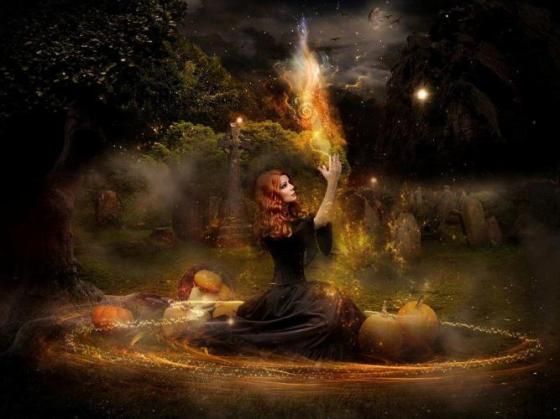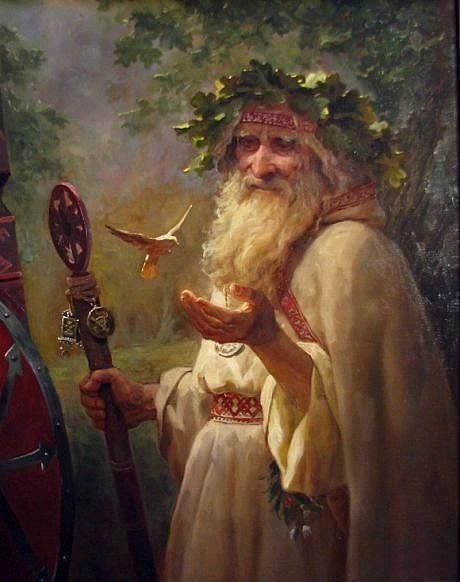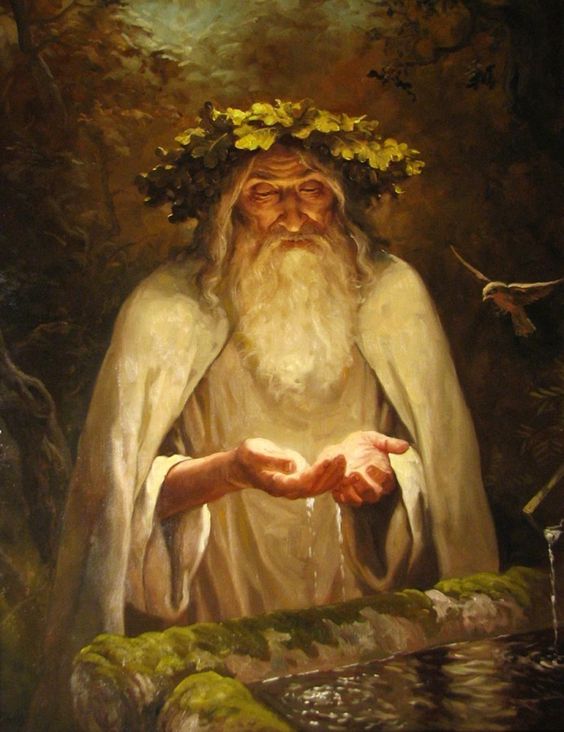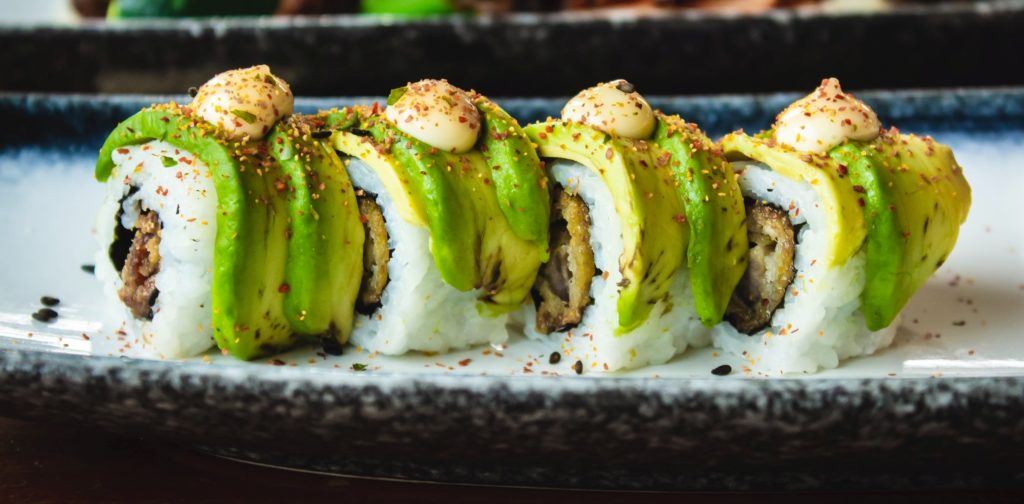Origin and history
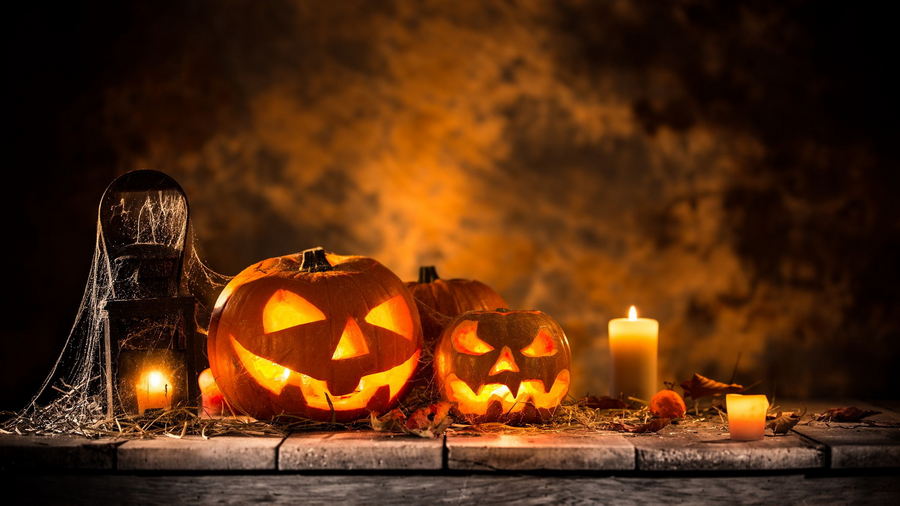
Samhain, sometimes called Samhain’s eve, was the most important Celtic holiday associated with the end of the harvest and the year. It was celebrated according to the Celtic calendar on the night of October 31 to November 1. During the festival, the Celts worshiped the spirits of their ancestors. The Samhain was the original holiday that later on, evolve into Halloween celebration, which strongly separated from its Celtic lineage and became a mixture of both pagan and Christian. Halloween itself is an abbreviation of the name of the day preceding All Souls’ Day “All Hallows’ Eve,” that is All Saints’ Eve.
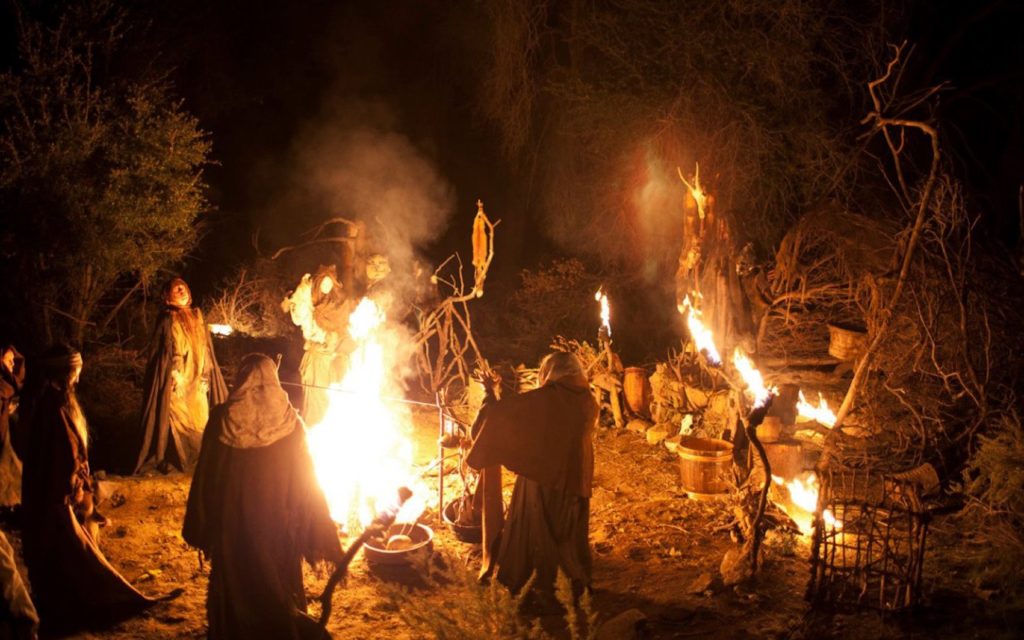
The genesis of the name of the holiday “Samhain” comes from the Old Celtic language from the word Samhainn or “Samhuinn” and abbreviated to “Sauin.” It marked the end of summer. Depending on the region and a given group, the holiday was named differently. It was known as “Calan Gaeaf” in Wales, Kalan Gwav in Cornwall, Kalan Goañv in Brittany, and “Mee Houney” on the Isle of Man. Samhain right next to Imbolc, Beltane and Lughnasadh. it was one of the four most important holidays celebrated by the Celts. They marked a particular cycle of the season.
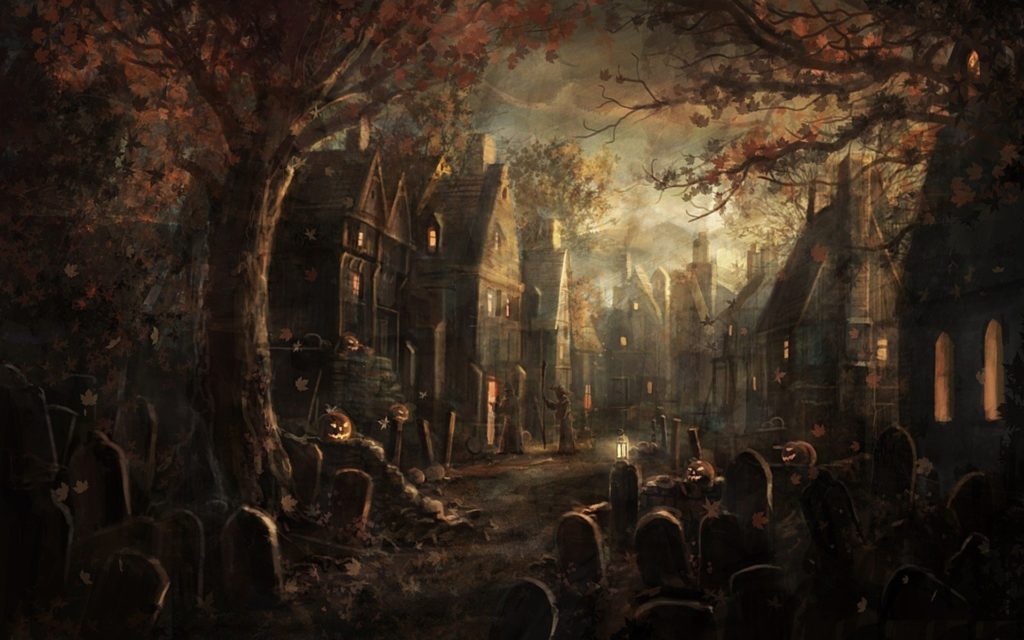
Samhain’s Eve fell on the night of October 31 to November 1. It was a special time for the Celts. Harvest was ending, cattle were brought from pastures and mountains to their homes, and some of them were slaughtered for winter supplies. The holiday also ended the calendar year and heralded the coming of winter. The days grew shorter and the nights longer. People locked themselves in warm houses.
During the festival of Samhain, as in Beltane, fires were lit into which bones and animal remains were thrown. The Celts believed that the gates of the world of the dead were opening on the night before Samhain. It was from them that the souls of the dead came out to live among people for the next year, to return to the afterlife again. At night, fires, lanterns, and torches were put out on purpose to make the houses look abandoned and inhospitable. In this way, they did not show lost souls the way home. The extinction was also read as a symbol of the departure, “death” of the old year. They performed witchcraft so that the spirits would not be interested in them. Food was displayed outside to keep ghosts from wandering in a darkened area. It was forbidden to close the door through which the dead passed during their lifetime, as it could anger them. Holy water was sprinkled on the door, animals, and children to prevent ghosts from invading them.
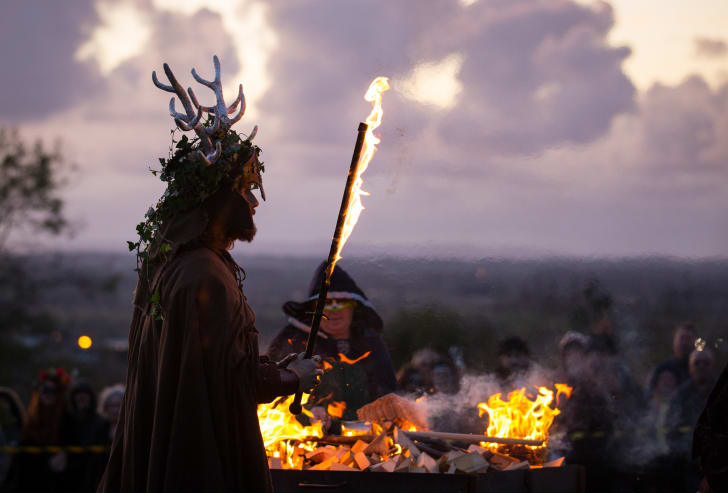
Celtic druids believed that on the day of Samhain the line between the afterlife and the living world was blurred, and that spirits, both good and bad, found it easier to enter the world of the living. Druids wore black costumes and large masks, rutabaga cut inti demon faces . The spirits of the ancestors were worshiped and invited into homes, while the evil spirits were scared away. It is believed that the custom of dressing up in bizarre costumes and wearing masks on that day stems from the need to scare away evil spirits.
At that time, fires and lanterns were also burned, which were to show the way for good spirits, and for the bad spirits – to function as a deterrent. By smoking, they wanted to give the sun strength to fight the dark and the cold. There were death dances around the fires. Interestingly, the mythological records also show that in Samhain, alcohol was not avoided, and even that the episodes of drunkenness were associated only with this holiday. Also on that night, witches, accompanied by black cats, foretold, and foretold the future.
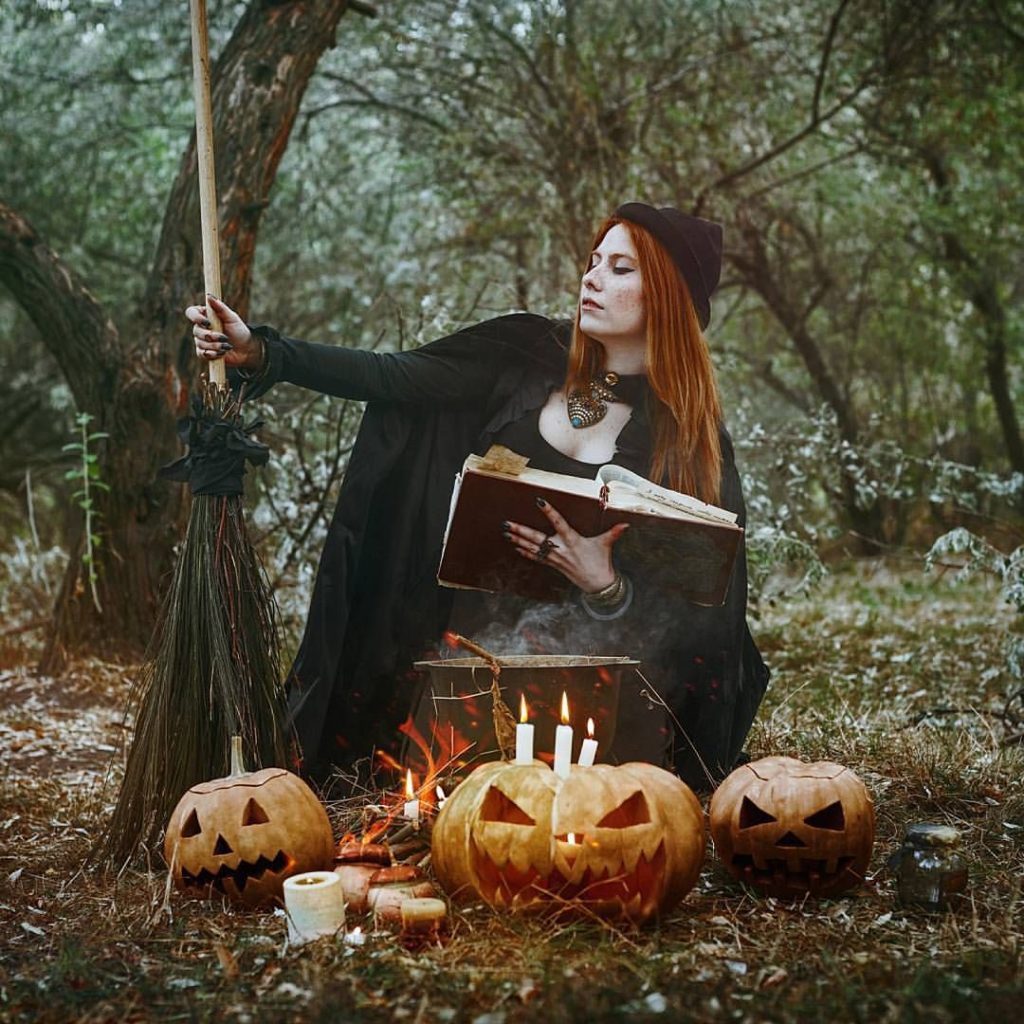
Offerings were certainly made on this holiday, but their descriptions have not survived. However, many legends related to this sacred have survived. The Iranians still in the fifth century AD in the place of Mag Slecht, they had – according to legends written in the 12th century CE, in the Book of Leinster – they were to offer a deity named Cromm Cruaich (Tomb Head or Bloody Head) everything that was firstborn and every third son. The chief’s house was to be set on fire, and he himself – symbolically killed so that at dawn on the first day of the new year he could be reborn again. The killing of the king on that day is associated with one of the Celtic legends that tells about the authentic, historical figure of King Muircert – the first Celtic ruler in today’s Ireland documented in “Chronicam Scotorum.”
Just before the feast of Samhain, King Muircertach was returning from hunting, where on the way he met a beautiful woman for whom he had a sudden and fervent love. He begged her to come with him to Cletech Castle. The woman finally agreed, but on three conditions. First, he had to drive out his lawful spouse. Second: no clergyman may enter his court. Third, he would never say her name. The name was Sin, or Storm. She had other names as well: Osnad (Sigh), Easnadh (Sound), Gaeth (Fierce Wind), Garb (Winter Night), Gem adaig (Scream) and Tuethan (Lament),so the king’s names could not be pronounced either. Sin Osnad was a sorcerer and a fairy. She knew the habitats of spirits and was able to unleash powerful, secret powers.
During a feast in honor of her arrival, Sin performed the first spells. She summoned two armies of ghosts, which in front of the revelers defeated each other. She prepared magical dishes out of water and ferns. The water turned into wine, which was not diminished in the jugs, despite the toasts. Ferns turned into hogs, from which the dish was prepared. Hogs spawned as soon as they were eaten. The next day, all the courtiers felt very sick after the magic feast, and the worst was King Muircertach. Even so, she was still working her magic. Shortly after sunrise, an army of headless knights and troops of blue-armored warriors appeared. They challenged the king to fight, and he, despite his weakness, fought and won. However, Sin again summoned the knights’ new spirits, and the king fought them again. Suddenly, St. Cainnech and dispersed Sin’s spells. Then the king understood that he was striking down ordinary stones with his sword.
Inside the castle, until the holy man was allowed, the magic began to work anew. The royal courtiers slept drunk after the magic feast, and Sin caused a whirlwind and a snowstorm raging around the castle. The king said:
“…Here is the sigh of a winter night, what a violent storm…”
In this way, he spoke the name of his lover three times. Now nothing could save him from death. He was weak – he and his entourage. He was tormented by nightmarish dreams: he saw his death in a castle burning during the siege or he was kidnapped by a griffin and carried to his nest, where he burned with the fabulous beast. When asked about the meaning of the dreams, the druid predicted the king’s imminent death. Weakened, he fell into a deep sleep. When this happened, Sin gathered all the javelins in the castle and placed them around the castle, with the blades pointed in its direction. Then she kindled a great fire that began to ravage all the castle chambers and farmyards. Raising her hands to the sky, she uttered another spell, and at the same moment another ghastly army burst into the ramparts of the castle with a wild cry. Muircertach awoke to the sound of the battle. However, he was so weakened and without strength that he did not have the strength to fight. Seeing that there were no weapons in the castle, he hid himself with one of the castle houses. Seeking shelter, he drowned in a large vat with wine. Great burning beam and falling from the ceiling pierced his body through.
Samhain vanishes, Halloween begins
After 835, under the influence of Christianity, the Samhain celebrations slowly faded away as the All-Saints feast was moved from May to November 1. Christian churches opposed the celebration of Samhain by introducing All Souls. The feast in 998 was introduced by St. Odilon, French Benedictine, and Superior of Cluny Abbey. In the fourteenth century, the memory of All Faithful Dead was introduced into the Roman liturgy and disseminated throughout the Church. The day before this holiday was called “All Hallows’ Eve”, which meant All Saints’ Eve, when people prayed for the dead before All Saints’ Day. The holiday was later shortened as Halloween.
At the turn of the 14th and 15th centuries, i.e., in the late Middle Ages, the danse macabre was very popular – the dance of death, i.e., a procession of people of all states with a skeleton at the forefront, expressing the equality of all people in the face of death. It was very popular especially in Spain and Scotland. The Dance of Death was one of the most popular allegories in the fine arts and literature of the late Middle Ages. Performances of this type were created as an admonition against the inevitable death fate, but also as an expression of disappointment with the vanity of the world and a complaint about the passing of time.
Due to Protestantism, i.e., the Reformation in England, which abolished both the doctrine of purgatory and the cult of saints, both holidays (All Saints ‘Day and All Souls’ Day) disappeared from most British areas and Halloween itself survived there only in the form of loose associations. On October 31, Protestant churches celebrate the Reformation Day. Meanwhile, both the Catholic holiday and the original pagan customs survived in Ireland. Halloween at a later time will be popularized by Irish expatriates.
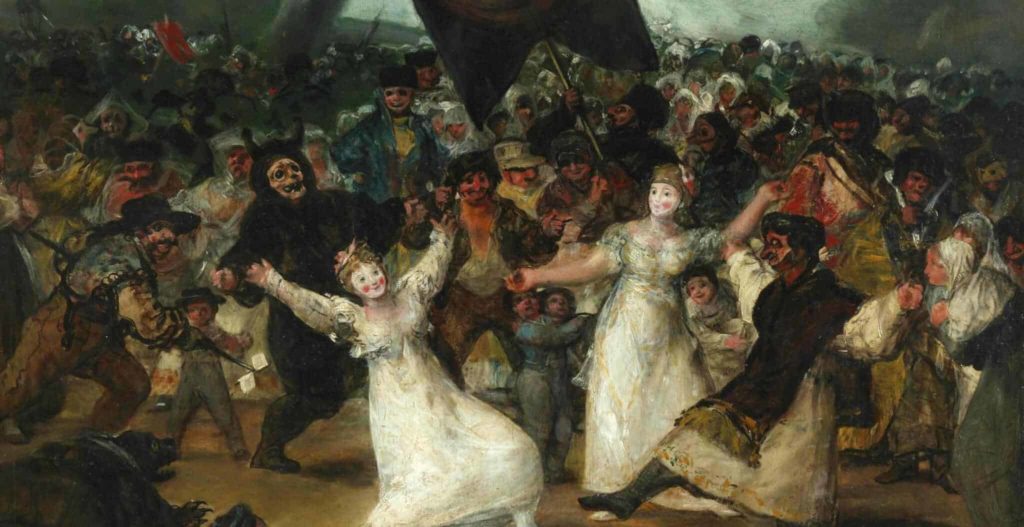
Halloween came to the United States in the 1840s thanks to immigrants from Ireland, which caused an increase in interest in mythology, pre-Christian rituals and in general – the extraterrestrial world. So, it is wrong to say that Halloween is an American holiday. Samhain has gained a lot of “fans”. They were called “Celtic New Year” and pinned dark Celtic legends.
Hollow pumpkins
One of the most important symbols of Halloween was Jack-o’-lantern, a popular lantern made of a hollow and properly cut pumpkin. On the occasion of Halloween, it has become a tradition to put lanterns in the window or in the door of the house. However, this type of lantern was not originally made in pumpkins. Before the pumpkin is the main vegetable and symbol of Halloween, rutabaga, potatoes, beets, and turnips were previously dug out. Until the arrival of Europeans in America, pumpkins and potatoes were unknown in Europe. Great Britain was the first to switch turnips from jack-o-lanterns to a pumpkin that was larger and easier to carve on.

For Irish peasants, the Jack-o’-lantern signified the wisps believed to be the souls of the dead. During mysterious rituals, human souls were to be freed from the bodies of black cats, dogs, and bats. Currently, in exposed places of houses, there are pumpkins hollowed out and illuminated from the inside with the shapes of various figures cut out and, depending on the imagination of the household members, imitations of human skulls, skeletons, mannequins, and famous characters from horror movies.
Jack the lantern
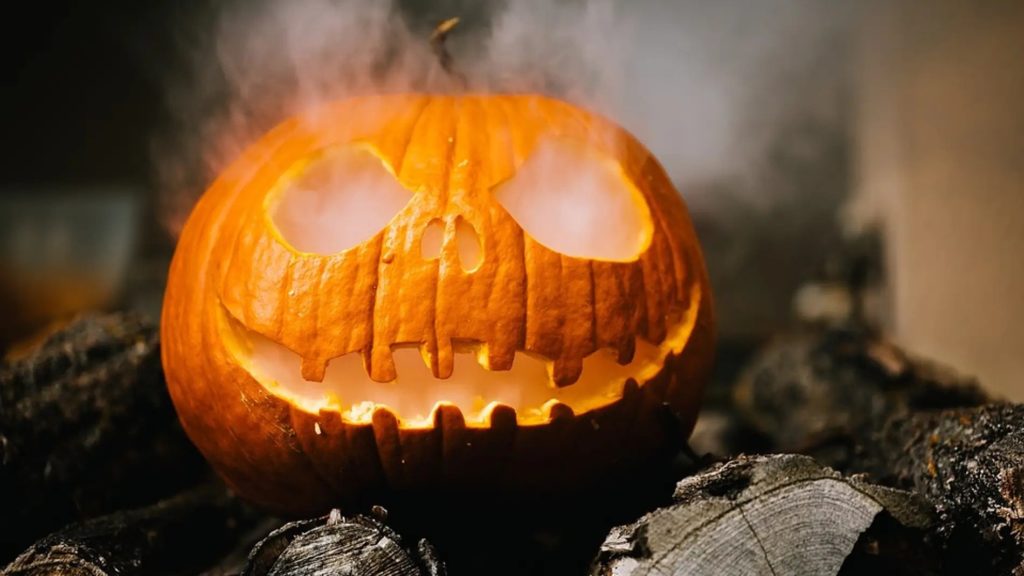
Why is the pumpkin lantern called Jack? According to legend, the name Jack-o’-lantern comes from a man named Jack, who during his lifetime used every opportunity to get rich. One day, Jack met the devil who offered him wealth for his soul. Shortly before Halloween, the devil came to him to take his soul. The man outsmarted the demon and tricked him into capturing him. However, he did not enjoy the success for a long time, because the miser died on October 31. Jack could not ascend to heaven because no one wanted his soul out of greed, while Hell did not want him because he was a fraud. Consequently, poor Jack has to walk with the lantern on the ground until the day of doomsday.
On October 31, 1920, the first Halloween parade in the United States took place in Anoka, Minnesota. The participants of the parade were residents dressed in colorful costumes of popular characters. In the following years, the procession was organized annually on October 31. In 1937, Anoka was proclaimed the world capital of Halloween. In the second half of the 20th century, the holiday reached Western Europe, and after the fall of the Iron Curtain at the end of the 20th century, it reached Central and Eastern Europe.
Halloween now
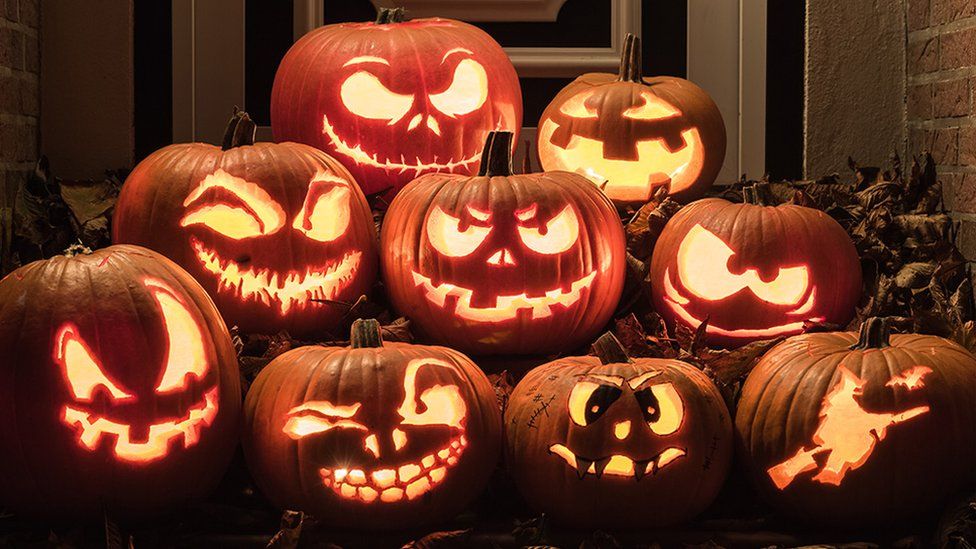
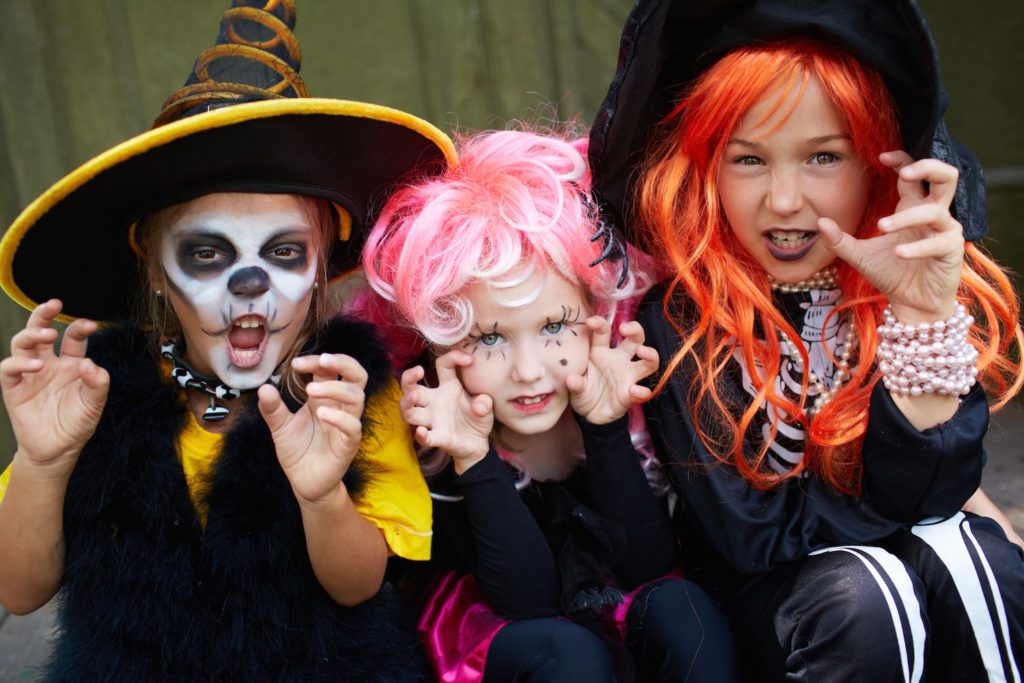
The current Halloween is also about summoning ghosts, lighting bonfires, and organizing a party where – according to tradition – there is no shortage of alcoholic beverages. But unfortunately, it has little to do with the old Samhain and the original Celtic beliefs. Rather, it is a combination of old beliefs with Christian ones. Currently, it is commercialized. Halloween came to Poland after the political changes in 1989. The Slavic equivalent of this holiday is often forgotten, i.e., Forefathers’ Eve. As one of the most important holidays of the year, Samhain is celebrated by the followers of Neopagan Wicca. The pentagram is a hallmark of the denomination, which is why, among other things, the Catholic Church are fiercely suppressing this movement, as allegedly calling for the worship of Satan.
